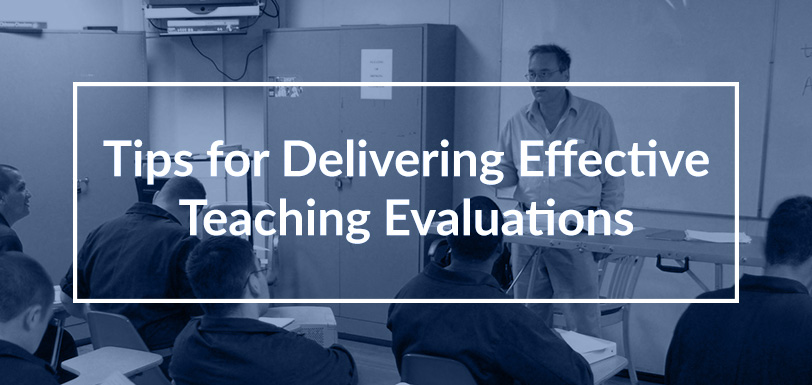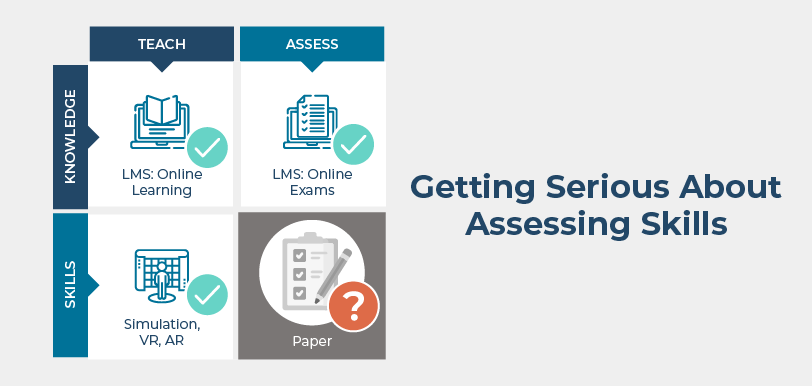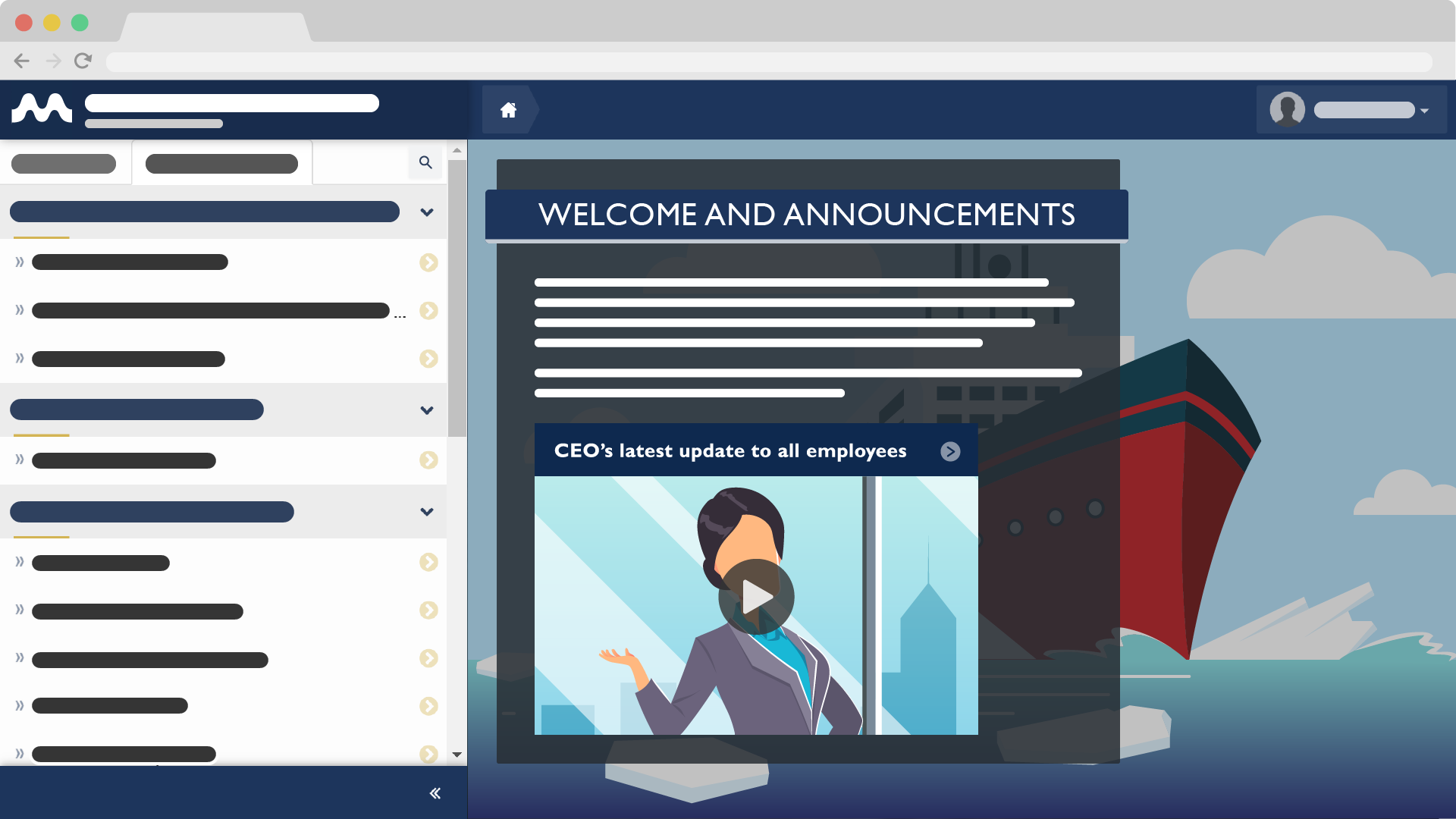Tips for Delivering Effective Teaching Evaluations
Jun 28, 2017 Murray Goldberg 0 Maritime Training, TipsPhoto above taken by Mass Communications Specialist Seaman Charles Thomas Green
Introduction
Teaching evaluations are a highly important part of any training program: it benefits the trainer, the trainees and the organization. After all, if you don’t measure it, you can’t manage (or improve on) it.
This is a continuation of a series of articles on the practice of performing teaching evaluations within a training program. The last article discussed what teaching evaluations are, why they’re important and things to keep in mind before you start. This post will go over some basic tips on how to structure and deliver teaching evaluations to your students for maximum effect.
If you would like to receive e-mail notifications of the next blog post in this series (and you have not already done so), please sign up here.
Student Evaluations
Having your students evaluate your teaching should be a staple within your courses. Evaluations can be done on paper or electronically, depending on the tools you have available and the size of your class. But regardless of the tool you use, there are a few basic principles you should adhere to in performing student teaching evaluations:
Simplicity
After personally having received many thousands of student evaluations of my teaching, I can say for certain that the ones I find most useful are those where the student has written a sentence or two to illustrate the point they are trying to make. To that end, I feel that the best evaluations are ones with a small number of broad questions that ask the student to give both a numerical score and to make a written comment.
Questions should be simple and broad to allow the students to focus on what matters to them. Limiting the number of questions helps ensure that they will not experience “questionnaire fatigue” and are sure to consider their responses carefully. The numerical scores are useful for tracking trends. Finally, the written comments are most immediately useful to me as an instructor and therefore should be highly encouraged.
As an example, the following is a list of teaching evaluation questions used at the University of British Columbia. They were derived from years of students evaluations with over 40,000 students (click here for the source).
- The instructor made it clear what students were expected to learn.
- The instructor communicated the subject matter effectively.
- The instructor helped inspire interest in learning the subject matter.
- Overall, evaluation of student learning (through exams, essays, presentations, etc.) was fair.
- The instructor showed concern for student learning.
- Overall, the instructor was an effective teacher.
These questions are both simple and broad. Remember that if you use them, you should encourage students to also make a written comment for each question.
Timing
Where I taught, student teaching evaluations were required in the last week or two of each term. However, I always felt as though this had the unfortunate effect: the comments made by students in the current course would not yield any benefit until the next term. Therefore, students never saw any positive change as a result of the comments they contributed.
Because of that, I decided early in my teaching career to give out teaching evaluation forms two times in a course. Once at the end as required by the university, and once roughly halfway into the term. The latter mid-term teaching evaluations gave me the opportunity to discuss the results with the students. I could also implement positive change that they could actually benefit from. This was wonderful because it made the evaluations very personal for them. Students heard, first hand, what the comments were and my reaction about what I may (or may not) be able to do to address the comments. They benefited, and were able to further comment on, any resultant change.
The added benefit of twice-per-course evaluations is that it gave me the opportunity to see if the changes I had made actually addressed their concerns. The same group of students gave both evaluations and therefore I could more reliably compare their comments from the first evaluation against those from the second. This produces a much clearer picture than simply looking for trends year over year.
Method
At UBC, teaching evaluations were always conducted anonymously. In addition, for the end-of-term evaluations, instructors were not allowed to see the evaluations until after the grades had been entered for the year. Both of these policies were meant to ensure that comments made by the students could, in no way, adversely affect the student’s grades.
I believe this is very important. The student/instructor relationship is one of unequal power. Students recognize that getting on the “bad side” of an instructor can adversely affect their future and there is not a lot of recourse except in extreme circumstances. As such, the only way students will feel comfortable making useful comments (especially those which highlight areas for improvement) is if they are assured that their grades cannot be affected.
In fact, UBC went to great lengths to ensure this was the case. One mechanism they employed was that the instructors were not allowed to handle any completed evaluations (until they were given to the instructor after the grades were entered, of course). Therefore, the instructor had to leave the room while the students filled out the evaluations, and a responsible student selected by the instructor was asked to collect the forms and return them to the head office.
However you perform the evaluations, do ensure that the students are free to make whatever comment they feel appropriate, without fear of negative consequence.
There’s more to say…
Next, I’d like to speak about what the instructor should do with the returned evaluations, and what the organization (maritime college, vessel operator, etc) should do to make most effect of these evaluations.
If you would like to receive e-mail notifications of upcoming articles, including the next one in this series (and you have not already done so) please sign up. Until next time – thanks for reading!
Follow this Blog!
Receive email notifications whenever a new maritime training article is posted. Enter your email address below:
Interested in Marine Learning Systems?
Contact us here to learn how you can upgrade your training delivery and management process to achieve superior safety and crew performance.






